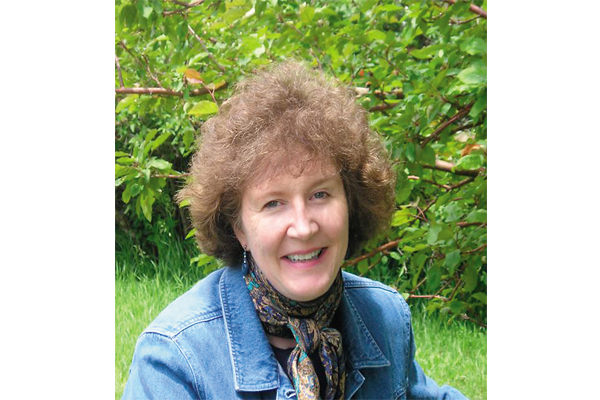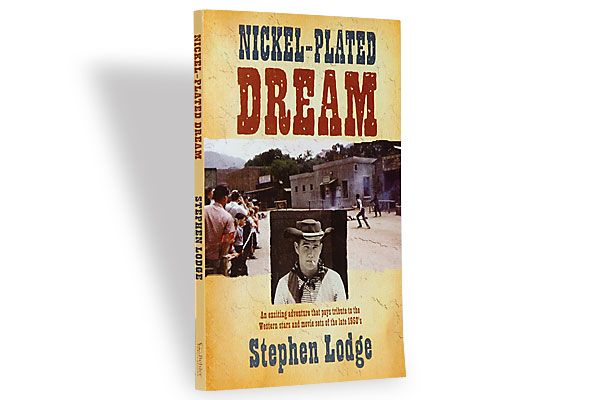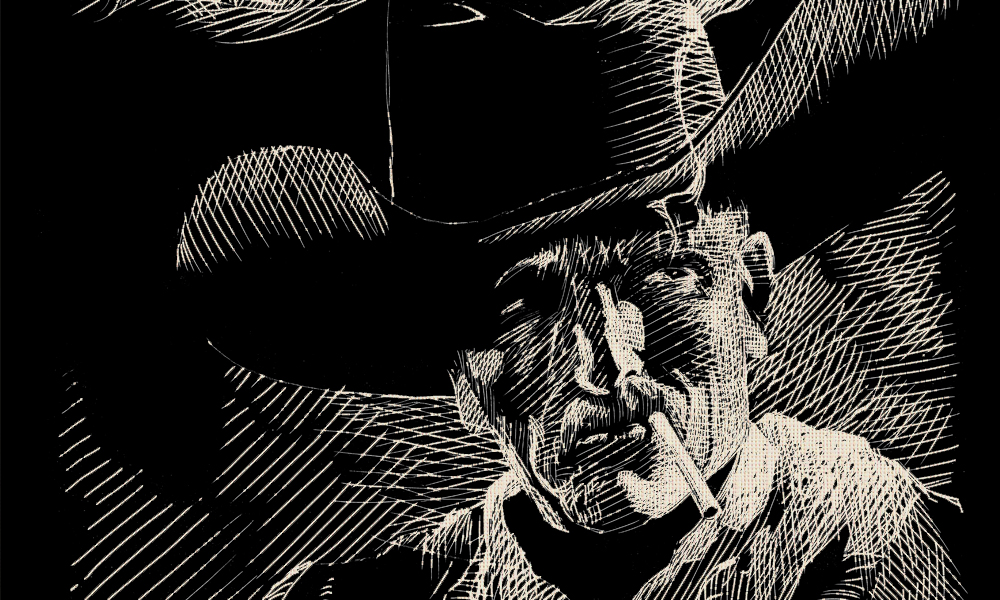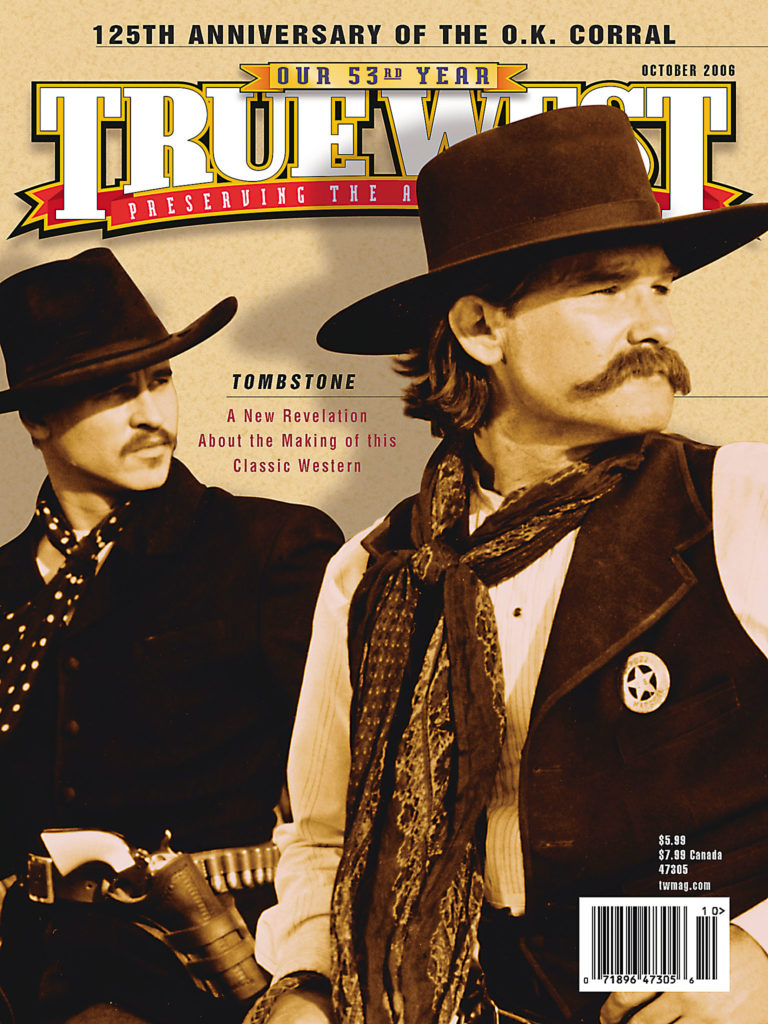 “I buried Pecker in his favorite place. I’d seen him come to pray here sometimes early of a morning when the sun was just coming over the eastern mountains.
“I buried Pecker in his favorite place. I’d seen him come to pray here sometimes early of a morning when the sun was just coming over the eastern mountains.
He’d kneel down by this very clump of sage, take off his hat, and be still for several minutes. I envied him that peace. So, it was natural for me to bury him here. And the right thing, the decent thing for me to do, as I’d done the killing.”
Lori Van Pelt clearly knows how to draw in readers, so it’s no wonder that her short story, “Pecker’s Revenge,” won a Spur this year. But the same solid research and crisp, defined story lines are also found in her tales of characters who made and manipulated Wyoming’s history.
This Saratoga, Wyoming, rancher’s wife splits her writing time between fiction—particularly short stories—and nonfiction, with time allowed for poetry and music. Reared on a ranch in Banner County, Nebraska, Lori studied business in college, worked in the banking industry, then turned her attention to writing—first for a weekly newspaper and then freelance.
She has published a collection of short fiction, Pecker’s Revenge and Other Stories from the Frontier’s Edge, with the University of New Mexico Press. That press also included her short story, “Natural Causes,” in Hot Biscuits: Eighteen Stories by Women & Men of the Ranching West. Other short fiction has appeared in Black Hats and White Hats, both edited by Robert J. Randisi and published by Berkley, plus American West: Twenty New Stories from the Western Writers of America, an anthology published by Forge Books.
But fiction is not her only forte. Two of her books detail the lives of Wyoming characters in Carbon and Laramie Counties. These short biographies feature outlaws and politicians, women and men, and are part of Lori’s “Dreamers and Schemers” series being published by High Plains Press.
She also took flight with the first woman to fly solo non-stop across the Atlantic Ocean when she wrote Amelia Earhart: The Sky’s No Limit for the “American Heroes” series published by Forge Books and recently named to the New York Public Library’s “Best Books for the Teen Age Reader 2006” list. And she has an essay in The Way West, a nonfiction anthology written by members of Western Writers of America and published by Forge Books.
TW: Do you find it difficult to switch from nonfiction to fiction?
Van Pelt: No. I enjoy working with both genres. Certain techniques, like engaging the senses and creating compelling narratives, can be used effectively in both nonfiction and fiction.
You’ve written about Cattle Kate and Amelia Earhart to characters of old Cheyenne. Which ones are your favorites, and why?
Amelia Earhart is definitely a favorite because I’ve been fascinated with her—and with aviation—since I was a young person. However, mostly I don’t think in terms of “favorites” but just choose people who intrigue me for some reason. For the Wyoming profiles, I decided to write first about people in Carbon County, where I live now, to learn more about the history of my new home. That led directly to writing about historical people from other areas of the state, such as Cheyenne, and has provided me with a great continuing education about Wyoming’s history.
What challenges do you face when placing real people into fictional situations?
In the few instances that I have used real people, they have played minor—but often crucial—parts in the stories. Fictional characters and situations are my main focus. Since the real people I’ve written about in my short stories played a part in history, I’ve tried to remain true to their achievements and/or foibles. To do that, I had to study them and the historic period they lived in, and then I let my imagination take hold and placed them in intriguing situations. My nonfiction writing, especially the “Dreamers and Schemers” series, helps teach and inspire me in this regard.
How does where you live affect you as a writer?
I live in a very rural area and that offers me the solitude to focus on my writing. There’s always a need for balance, though, because too much solitude can quickly turn into isolation and loneliness. Research often involves a mixture of travel, Internet searching and using interlibrary loan services at the University of Wyoming library in Laramie, located about 100 miles from my home, and the similar services of other institutions throughout the country. I work in a log cabin that is more than a century old, built by the first owner of my husband’s ranch, so the place where I live and work is also quite inspiring.
In that small, century-old cabin, Lori brings to life her characters—both the real ones and those who spring from her imagination. She is now completing another collection of short fiction and is researching and beginning the writing process for additional biographies.
As for Pecker and his revenge, all we can say is, he was a man who was “stuck to his dream.”






